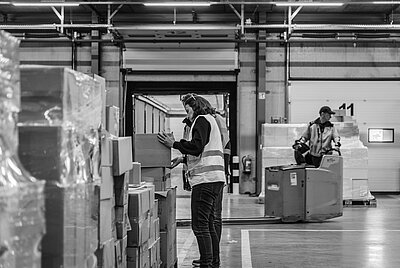The Real Issue Isn’t a Lack of Data — It’s a Lack of Insight
Most companies already have dashboards.
They’ve got reports, KPIs, charts, PowerPoints.
Some even have AI pilots running in forecasting or planning.
But when you zoom in on the day-to-day operations — the packaging, tools, PPE, transport materials, warehouse essentials — that’s where the trail goes cold.
That’s GNFR: Goods Not For Resale.
The backbone of your backend.
And in too many businesses, it’s either:
- Not tracked in enough detail
- Siloed across multiple departments
- Or buried in a spend category nobody really owns
So while leadership talks about “data-driven decisions,” entire budget lines are running on guesswork and gut feel.
What That Blind Spot Is Costing You
Let’s get specific.
If you don’t know what you're spending on GNFR — across all sites, teams, and regions — here’s what that creates:
- Unnecessary stockpiling “just to be safe”
- Multiple teams ordering the same item in different ways
- Suppliers slipping through with inconsistent pricing
- Missed opportunities for consolidation, standardisation, or volume leverage
According to a Coresight Research survey, 64.5% of retail and CPG companies reported GNFR expenses equating to 11%–20% of their total costs.
This isn’t about cutting costs for the sake of it.
It’s about regaining control in a volatile environment.
Where AI Actually Delivers — and Where It Doesn’t
AI can do incredible things — when it’s fed the right data.
But it’s not going to fix messy procurement habits, clean up disjointed supplier catalogs, or figure out why you’ve got 14 types of tape across six warehouses.
In fact, most businesses aren’t ready to “do AI” in ops — not because they lack the tech, but because they lack the clarity.
You can’t optimise what you can’t see.
What You Can Do Right Now: Create Operational Insight
This is where the most strategic teams are focusing:
- Getting full transparency into what’s being bought, where, and by whom
- Turning procurement data into operational insight — not just finance reporting
- Using tools like PowerBI to visualise trends, spot inefficiencies, and flag risks in real time
- Making decisions on real, shared data — not assumptions
We help large businesses unlock exactly this kind of insight by consolidating their GNFR procurement under one roof — and delivering clear, structured data through PowerBI. The result? Less complexity, more visibility, and better decisions across sourcing, stock, and spend.
Questions Worth Asking This Quarter
- Which parts of our GNFR spend do we actually have visibility on?
- How many suppliers are we using for similar items — and why?
- What products are driving our holding costs or cluttering up inventory?
- Are we making procurement decisions that align with operational strategy — or just reacting?
Because when your backend operations are clear, consistent, and consolidated — you're not just saving time and money. You're freeing up your teams to focus on what actually drives growth: innovation, customer experience, and forward momentum.
Final Word
You don’t need to chase AI just because everyone else is.
Start with the blind spots.
Fix the foundations.
Get clear on what your business is really doing — and what it’s costing you behind the scenes.
Because in supply chain operations, competitive advantage doesn’t come from having the most data.
It comes from knowing what to do with it.
And that starts with seeing what’s been hiding in plain sight.


